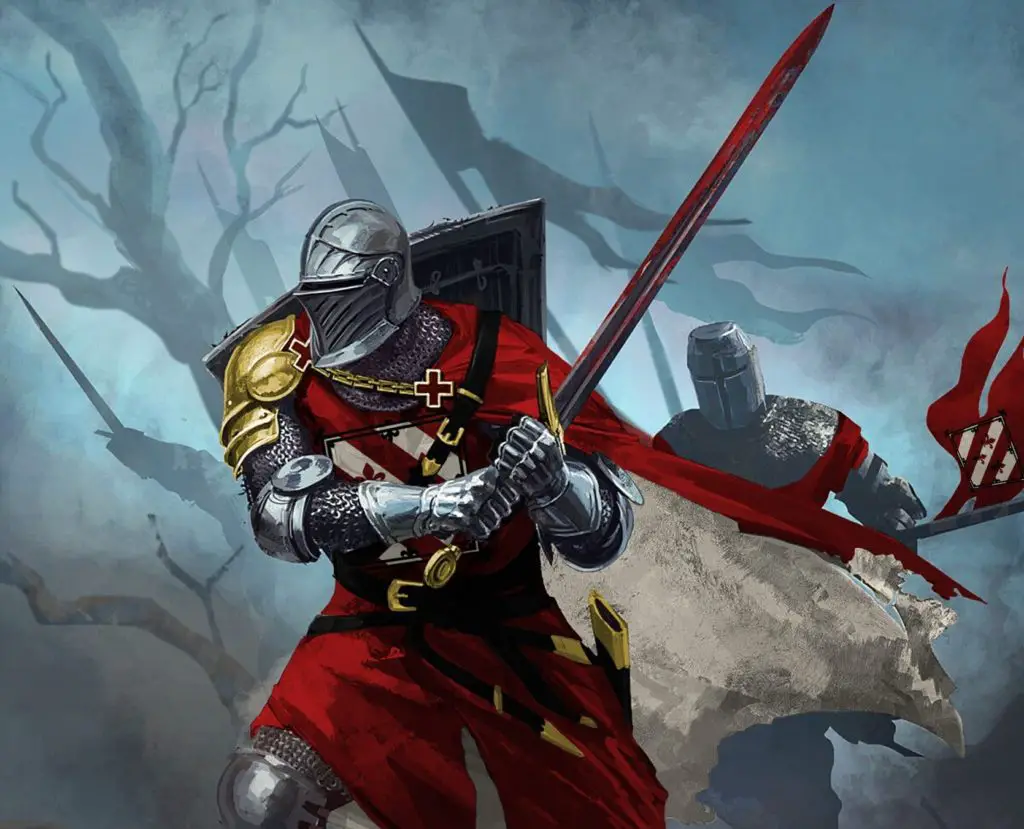I’m a sucker for survival mechanics. I always try to include them in adventures I run. I’ve recently come to the end of a year-long campaign I’ve DMed that centered heavily on survival. My players have traveled hundreds of miles through dense fey forests, along continent-spanning rivers, and across frigid arctic plains, and I’ve come to one conclusion:
The survival rules in D&D kinda suck.
But don’t worry, I’ve learned a lot from this campaign, and I’m here to distill those lessons into an article to fix survival in D&D. Or at least, greatly improve it. You can skip right to the rules at the bottom of the article, but in the space between, I’m going to talk about why I think survival in D&D sucks and about why I even want to include survival elements in my D&D adventures.
Why Does RAW Survival Suck?
D&D 5e has a smattering of rules and optional rules that amount to, at best, an incomplete system, and at worst, an unfun survival experience. Allow me to break them down and why I think survival in 5e often fails.
Encumbrance
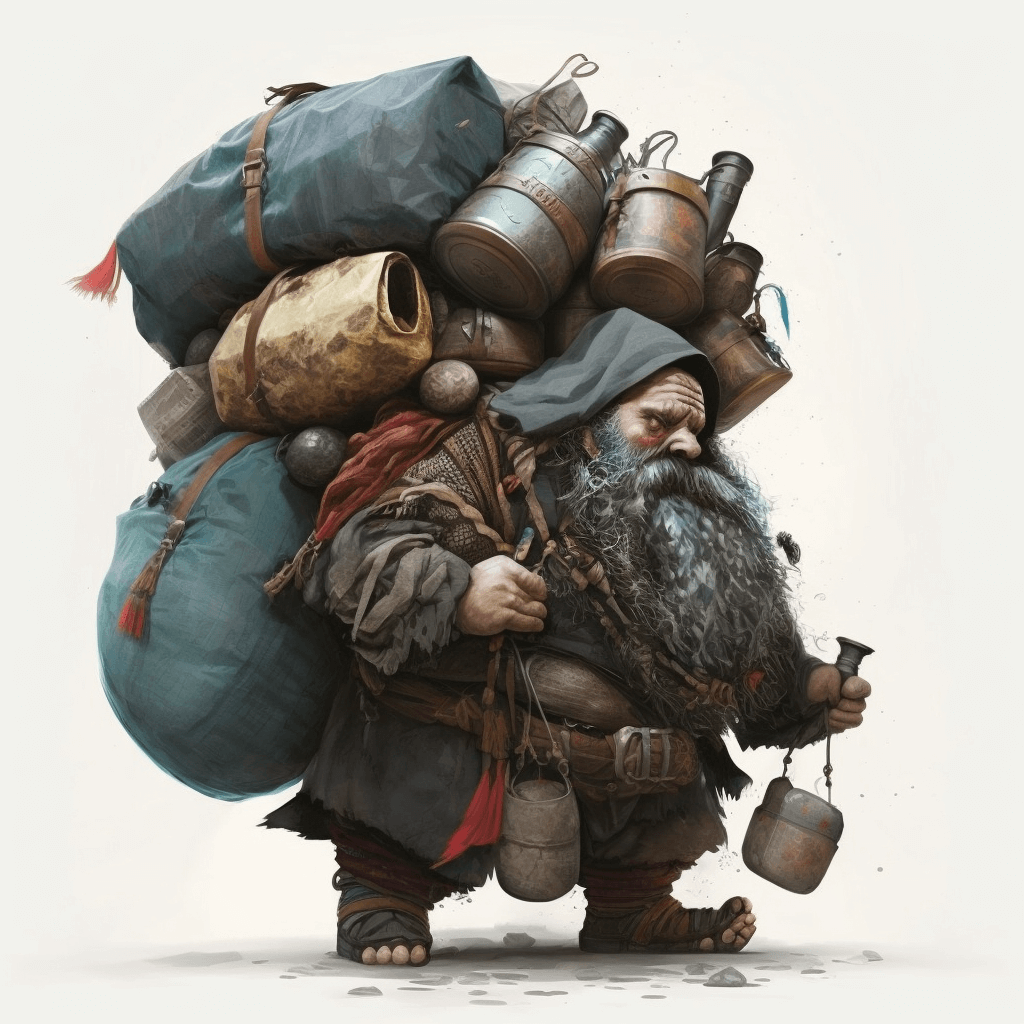
Frankly, encumbrance is too encumbering. The default carry weight rules are too calculation-heavy for most players. Either the players have to constantly recalculate the weight of the several dozen items they carry or they have to create a system to automate that task, not to mention that the starting gear of some classes already puts them lightly encumbered. Also, it adds a lot of pressure on DMs to know the weight of every little thing. There’s nothing like being asked by your players how much a wolf carcass weighs mid-session.
Travel Pace
Travel pace is, I think, a good concept. It gives players options for how they want to move through the world with trade offs and limitations for each option. However, in implementation, travel pace fails to give interesting options or meaningful trade offs. There is very little reason to not travel at a Fast Pace except in very specific circumstances, and the small amount of activities to do while traveling mean players are doing the same thing day after day.
Random Encounters and Combat
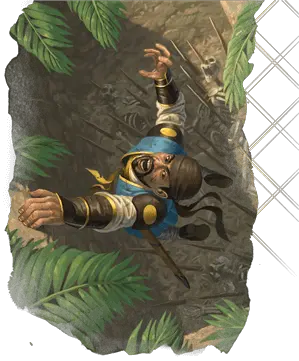
The random encounter tables in the core rulebooks are really bad. My design philosophy for encounter tables is that they need to have a purpose built into the encounter and generally shouldn’t immediately result in combat. Including just the number of monsters in an encounter table leans towards immediate combat with little guidance on how to make it an interesting encounter. Another important detail that is often left out is when the enemy will retreat, surrender, or offer mercy to the characters if combat happens.
Combat is often the default consequence of a failed skill check or as the default obstacle. Unfortunately, combat takes time. Usually quite a bit of time. It’s just a fact of D&D. Since it makes up 25%-50% of the random encounter tables in the core rulebooks, it can make trying to run random encounters devolve into slow tedium. That’s not to say that combat should be avoided or serves no purpose at all. However, when combined with other survival rules, combat as a survival obstacle often provides little benefit for a great cost.
Spells and Classes Trivializing Survival
Rangers trivialize most survival situations with their class abilities, and about a dozen low level spells can mitigate most if not all survival rules. And that’s not even getting into magic items. Some of the rules I propose later avoid being trivialized by spells, but you can also just ask your players not to take certain spells or work with your players to nerf problem spells.
Long Rests and the Adventuring Day Reset
One of the main tools for applying consequences in survival situations is exhaustion. However, on long trips covering large distances, long rests can make consequences very hard to maintain. This also ties into combat and random encounters, where if the players are coming into a combat with full rest, it’s the only encounter for the day, and, since it’s a random encounter, there are no stakes or story progression to it, AND if they have to do this four times before the next location, these combats are tedious and eat up time.
One Person Does All the Skill Checks
Survival is literally a skill in D&D, and it usually falls to one person to make all the skill checks in survival situations.
Why Do I Use Survival Rules?
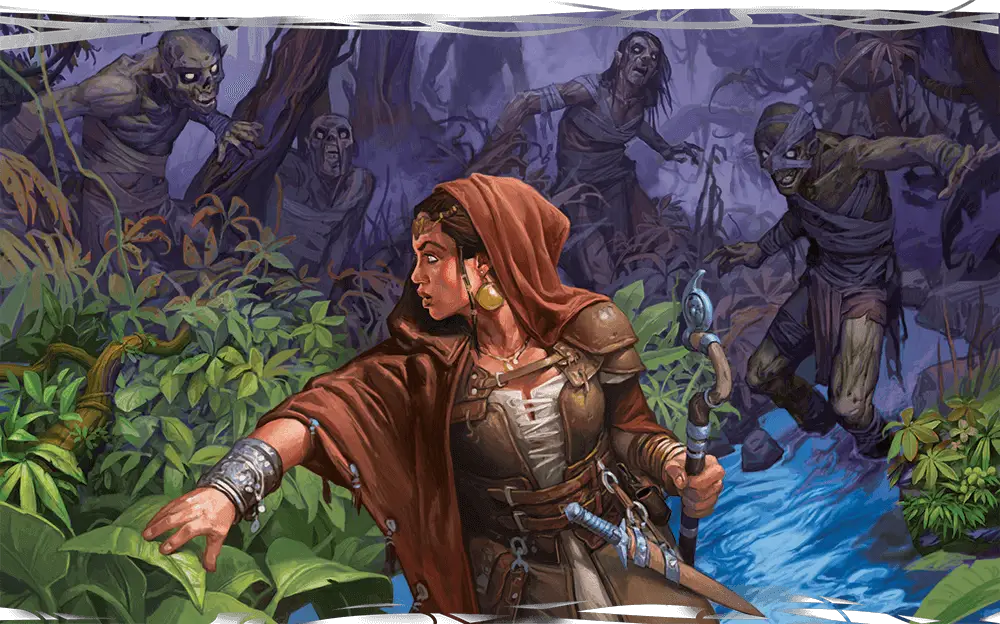
So, I mean, why even bother with survival at all? Well, I like to use survival rules to do two things:
- Create a simulation of real life, and
- Add structured choices and consequences to how the characters interact with the world.
For instance, I like to use rules surrounding travel (like encumbrance, travel pace, and food/water consumption) to try to simulate how travel functioned in real life before modern methods. Taking inspiration from works like Lord of the Rings, I want to make the players feel the length and distance of the journey they’re going on and plan accordingly.
In a short adventure I ran, I gave the players a map and a list of goals to help their village. With a list of rules for travel and survival, the players had the ability to choose their own path through the world and decide how to approach the various obstacles across the map.
One of the biggest lessons I’ve learned is that you need to use survival rules for a reason. Plopping encumbrance into an adventure where no one carries a whole bunch of stuff is just adding unnecessary bloat to the game. Adding ration and water tracking to a game where the players never need to worry about running out just eats up time. So, that brings us to the next question.
When Should You Use Survival Rules?
I think survival rules should only be used in certain ways to be added to a game.
- Use them in situations where they will actually get used.
- Only use them when they provide meaningful consequences and meaningful challenges, such as when the players are in a hostile wilderness, places where food/water/shelter are scarce, or when time or weight allowance is important (like if the loot of a dungeon is all fancy furniture that’s difficult to transport).
- Use them as a way to add tension.
- Resource management can force the players to make difficult choices or find a novel way to approach a problem. You can make the decision to engage in combat a lot riskier by preventing the characters from taking a long rest for a longer period than base D&D. This essentially stretches out the adventuring day across multiple in-game days.
- Use it probably only at lower levels.
- High level campaigns have many more ways to overcome survival-based challenges, especially if you have spellcasters. While it’s still possible to do survival at high levels with magic chicanery, it’s much easier at low-to-mid levels.
What Makes Good Survival Rules in D&D?
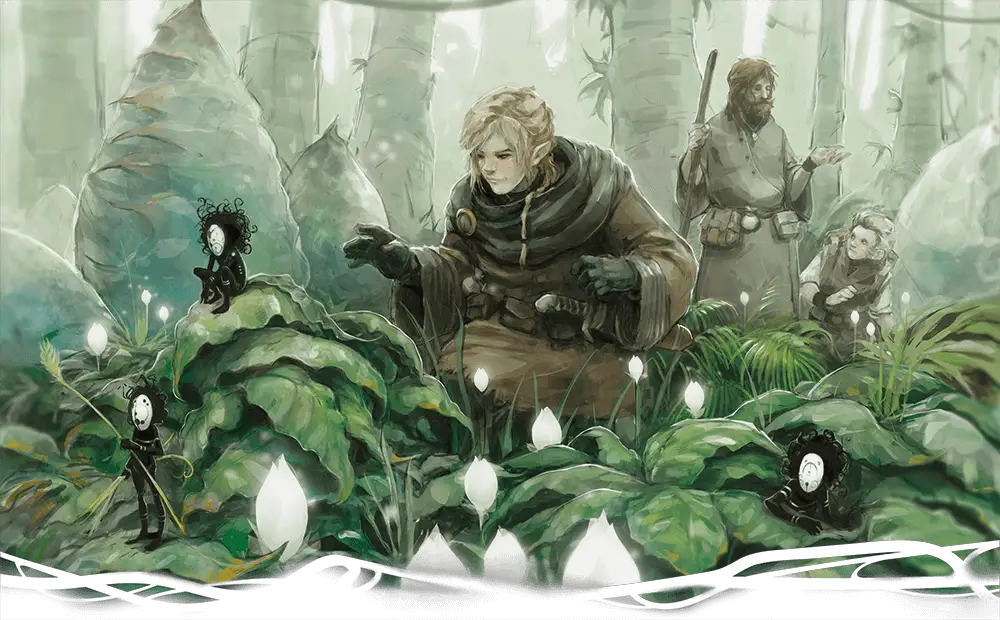
Good survival rules should provide actual options or consequences for the players, slot easily into place without significant burden, and be fun for both the DM and the players. The rules should compel the players to make choices (which doesn’t mean defaulting to the same choice over and over) and know what consequences they could face, even if those consequences are dependent on the roll of the die. The rules should avoid significant complexity to avoid overwhelming the players and DM, though that will mean different things for different tables. They should also balance how much time they use vs how much they add. Finally, they should be enjoyable to everyone at the table. If they’re not vibing with people, they’re not worth adding and bringing down the mood of the table.
The Fix
These rules, tools, and suggestions can be applied as you please, and for some, I present several different options to fit what kind of table you run.
Time
Create and mark a calendar! This grounds your players in the world and helps you keep track of how much time is passing. About half of all survival rules revolve around time passing, so I consider this one of the most important parts of survival.
Map
Create a map! Maps let the players plan their travels ahead of time. Even very simple maps provide a bunch of utility for the players. Also, maps are delightful. I consider maps another essential aspect of running survival rules.
Inventory and Encumbrance
Switch to a slot-based inventory system. Slot-based inventory systems simulate weight but in a much more manageable way, and they also simulate the bulkiness of items, which is lacking in a weight-based system. I use a slot-based system by Hombrew Homonculus (Google Drive pdf link) with a few minor changes:
- Rations can only be bundled up to 2 per slot.
- Coins and gems can be bundled up to 200 per slot.
- Characters get a side pouch, which is an extra 5 slots that can only hold gold, potions, scrolls, and other small consumable items.
- Bags of Holding take up 1 slot and have 20 internal slots; Heward’s Handy Haversacks do not take up a slot, have 12 internal slots, and you can only wear one; Portable Holes do not take up a slot and have 50 internal slots.
- Saddlebags on a beast of burden give access to a maximum of 20 slots; carts and other vehicles have no upper slot limit.
- General rule-of-thumb: 10 pounds is about 1 slot.
Food and Water Requirements
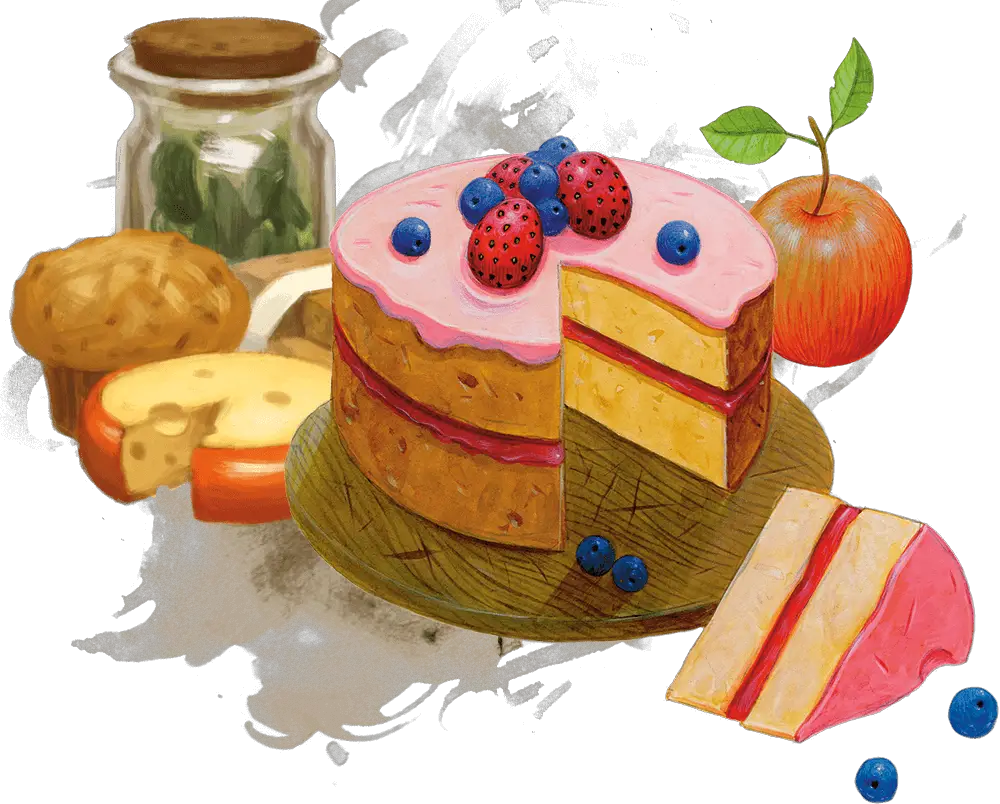
First, the requirements are simplified as follows:
- 1 ration/day (2 lbs, if weight is needed)
- 1 waterskin/day (2 quarts, if volume is needed)
Characters can go up to 3 + their Constitution modifier (minimum 1) days without food. At the end of each day beyond that, the character must make a Constitution saving throw DC 10 + 5 for each day beyond the limit or take one level of exhaustion. A character can eat half a ration in a day and only count it as half a day without food. A normal day of eating resets the count of days without food to zero.
Characters who only drink half the required amount of water in a day must make a DC 15 Constitution saving throw at the end of the day or take one level of exhaustion. A character with access to even less automatically takes one level of exhaustion at the end of the day.
In addition to the above rules, here are three alternate rules that give consequences to going without food or water. In increasing levels of punishment, these rules are:
- Characters must consume the full amount to regain hit dice.
- Characters must consume the full amount to reduce levels of exhaustion.
- Characters must consume the full amount to be able to take a long rest.
These additional rules can alternatively be applied to races that don’t need to eat to survive (like the Warforged or Autognomes). This ensures that survival mechanics still affect these races while not stripping them of their features.
Resting Rules
Long rests provide a reset for the characters, allowing them to regain all abilities. To make that total reset harder to obtain, I present three alternative rules, which can be mixed and matched to provide increasing difficulty.
- Characters do not regain hit points on a long rest. Instead, they gain only half of their hit dice. They may spend hit dice to heal as if taking a short rest before regaining lost hit dice.
- Characters can only take a long rest when in a “safe area,” like a town or established campsite.
- Long rests take 3 days. This can be superseded by the Gritty Realism rest variant entirely, but I find allowing short rests to function as-is while making long rests slightly longer results in a feel more similar to base D&D while still making long rests more demanding.
Encounter Tables and Ability Checks
First off, don’t immediately force the party into combat. Give them the opportunity to avoid it. Include a couple of interesting details to spice up the encounter. Beyond just potential combat encounters, include interesting locales, opportunities for loot or other rewards, and interactions with NPCs. Also take the opportunity to ask for unusual skill checks and ability score combinations.
Below is an example encounter table where most encounters can be side-stepped with an initial success on a skill check. The table tries to avoid setting DCs so you can tailor to how difficult you think the situation should be. This table focuses on skill checks and consequences so serve as inspiration, so feel free to replace the results with other types of encounters.
| d20 | Skill Check | Encounter |
|---|---|---|
| 1 | Animal Handling (Intelligence) | They encounter an injured fox on the side of the road. On failure, they don’t notice the fox is infected with Sewer Plague. |
| 2 | Perception (Strength) | The path on a 50-foot cliff is washed out. On failure, there’s no easy way past, and they’ll have to either climb across or backtrack and lose time. |
| 3 | Survival (Intelligence) | A terrible storm is brewing. Success gives them advantage on all checks. Regardless, the party needs to decide to shelter and lose time or push on and make Constitution saves against exhaustion. |
| 4 | Arcana (Constitution) | The party travels through an area with a strange hunger magic. On failure, the ration requirement is doubled for the day. |
| 5 | Survival (Wisdom) | The landscape turns swampy. On failure, the party moves at half speed today. |
| 6 | Arcana (Charisma) | On failure, the party is visited by 4 pixies who interrupt their sleep with pranks. |
| 7 | Animal Handling (Dexterity) | A herd of elk with blood on their antlers pass by. On failure, the party finds themselves in the middle of an agitated herd. |
| 8 | Perception (Charisma) | A trader and their cart stops the party on the road to sell some common magic items. On failure, a thief tries to steal from the party. |
| 9 | Persuasion (Charisma) | The party meets a lost traveler on the road who nervously tugs on his beard. On failure, the traveler insists on camping next to the party, but a group of thugs arrive in the night to take him. |
| 10 | Acrobatics (Dexterity) | A river crosses the path. On failure, it’s running high and fast and presents a hazard while crossing. |
| 11 | Intimidation (Strength or Dexterity) | Thick vegetation is pressing in on the party. On failure, the plants attempt to entangle the party and slow their progress. |
| 12 | Survival (Intelligence) | The forest is dark and twisty. On failure, the party becomes lost. |
| 13 | Athletics (Dexterity) | The forest brush is dense. On failure, the party moves at half speed today. |
| 14 | Animal Handling (Wisdom) | On failure, a mama bear and her cub pass close by, and the bear does not like being close to the party. |
| 15 | Stealth (Wisdom) | A gnoll pack has set up an ambush ahead. On failure, the party only notices a few moments before the trap is sprung. |
| 16 | Survival (Intelligence) | On failure, the party stumbles into a clearing filled with hunting traps. As they set some off, they hear a gnoll pack whopping nearby. |
| 17 | Arcana (Intelligence) | On failure, the party sets up camp in a spot tainted by an ancient duel. If the party takes a long rest here, they’ll lose 2 hit dice upon awakening. |
| 18 | Nature (Intelligence) | On failure, the party stumbles into a patch of poisonous plants. On a failed Constitution saving throw, a character will take 2d8 poison damage. |
| 19 | Stealth (Dexterity) | On failure, the group discovers they’re being tailed by a wolf pack. |
| 20 | Athletics (Strength) | The group is traveling through rough terrain. On failure, the party travels at half speed today. |



